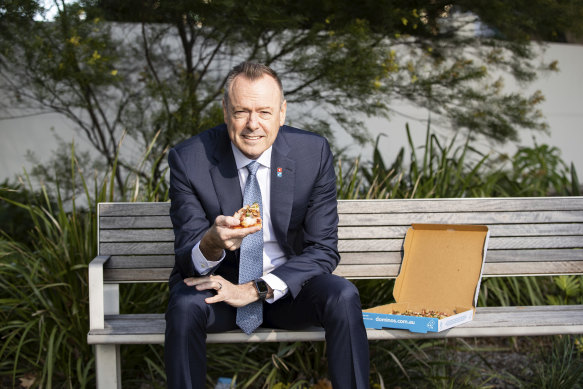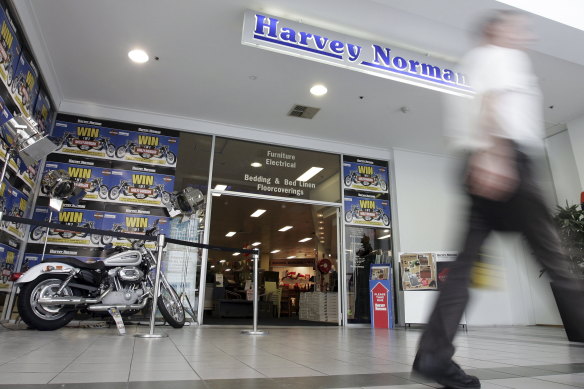The Domino’s effect: A fine line between profit and pain for corporate Australia
When you think of bellwether companies for the Australian sharemarket, Domino’s Pizza is probably not top of the list. However, the ASX-listed pizza maker’s recent woes illustrate broader challenges facing many of our largest businesses: how to deal with surging costs at a time when consumers are firmly in belt-tightening mode.
In one of the more dramatic results in the recent earnings season, shares in Domino’s plunged by a fifth last month when chief executive Don Meij admitted the company had botched increases in delivery prices, which led some customers to cut back on their pizza orders.

Portfolio manager at Opal Capital Omkar Joshi says the plight of Domino’s is relevant to the wider market because it shows the tougher environment for companies seeking to pass on costs to their customers. Businesses have been trying to pass on higher costs for the past year, but now they are doing so at a time when the long-awaited slowdown of household spending appears to be arriving.
“[Domino’s] obviously tried to protect their margin. They underestimated how much impact that had on demand, and that’s where things went pear-shaped,” Joshi says.
“When things are going well and prices are going up, consumers are probably more happy to pay it. If the environment is getting tougher, the household budget tightens.”
‘Inflation was the biggest driver on both the winning and losing side of the results.’
Reece Birtles, Martin Currie chief investment officer
The market reaction to Domino’s pizza price rise may have been particularly savage, but it is far from the only company to take a hit from inflation during the recent earnings season.
Indeed, although there have been some huge corporate winners from inflation, as well as losers, some investors argue that the combination of price rises and interest rate increases suggest this could be as good as it gets for many of our biggest companies.
‘Hard landing’ fears
The February earnings season, which wrapped up this week, provided detailed insights on how most of Australia’s biggest companies have fared in late 2022 and early 2023, as the economy slowed in the face of high inflation and rising interest rates.
While earnings season is always a mixed bag, analysts say the results overall showed conditions had been strong last year, but the outlook for 2023 is much more cautious.
CommSec analysis of 137 companies found 87 per cent managed to report a profit, but only 41 per cent of these lifted their earnings, in part because of rising costs.
UBS strategist Richard Schellbach says a slightly higher number of companies missed expectations than beat them, which he says points to “an operating environment which has probably already peaked”.
Companies acknowledged they were heading into a much less buoyant economy, with retailers noting consumers were less likely to splash out on big-ticket purchases, and many businesses issuing cautious outlook statements.
“Fears around an economic hard landing have certainly increased, with this being most apparent from companies in the building material, steel and traditional media sectors,” Schellbach says in a recent report.
Another big concern of CEOs is a familiar one from 2022: rising costs, and the impact this has on their bottom lines.
Cadence Capital portfolio manager Karl Siegling says his overarching sense from earnings season is not one of “Armageddon”, but nor is he feeling bullish. Rather, he says the clear message from CEOs is that companies are facing a range of “headwinds” – including higher interest rates, a tight labour market, and a weakening household sector.
“What you’re looking at is a lot of increases in input costs, which in turn puts quite a lot of pressure on profits, unless you can increase revenue or put prices up,” Siegling says.
Martin Currie chief investment officer Reece Birtles says that how companies deal with inflation has been a key issue across the market.

“The companies that beat [expectations] demonstrated pricing power. The companies that missed [expectations] emphasised cost pressure,” Birtles says.
“Inflation was the biggest driver on both the winning and losing side of the results.”
At the same time as companies attempt to pass on rising costs, fund managers say there are clear signs households are responding to higher interest rates by pulling back their spending.
Michael Higgins, a small and mid-cap portfolio manager at Milford Asset Management, says these smaller companies tend to feel the squeeze earlier than larger businesses because they are less diversified. He says that although the Christmas period was strong for many, January and February appear to have been weaker, while labour cost inflation was “really evident across the board”.
He says there are signs consumers are already cutting back on bigger-ticket items such as furniture – pointing to certain signs of weakness at Nick Scali – and says he believes the weakness will arrive soon in smaller discretionary purchases, such as fashion. “Our research tends to say that furniture slows first and then other categories follow,” he says.
Mining, one of the largest sectors of the local market, also had a softer half following weaker commodity prices, with BHP, Rio Tinto and Fortescue all cutting dividends on softer profits.
Profiteering?
Despite the softening outlook for many businesses, it’s hard to miss the fact that some blue-chip companies are profiting handsomely from the economic forces at play, and this is bringing greater political scrutiny.
The standout examples are Qantas, which enjoyed a December half bonanza after soaring airfares, alongside record profits at Commonwealth Bank and oil and gas giant Woodside.
In all three industries, politicians have weighed in.
Treasurer Jim Chalmers last month ordered an official inquiry into bank deposits, accusing banks of dragging their feet in passing on rates to savers.
Independent MP Zali Steggall said Woodside had made “obscene profits off the back of communities and war”.
Labor Senator, former Transport Workers’ Union boss and long-time Qantas critic Tony Sheldon accused the airline of “ripping off customers with extortionate airfares during a cost-of-living crisis”.
Naturally, however, observers in the financial markets have a very different take.
In response to the political criticism of record earnings at the likes of CBA, Qantas or Woodside, portfolio manager at Regal Funds Management Mark Nathan says it’s important to look at the individual drivers in each case.
Banks are simply very large businesses, he says, and the raw profit numbers reflect this. “People love to criticise the banks and point to the big dollar profits, but when you look at the return on equity being earned, they are not outrageous and they are not out of line with historic performance or banks overseas,” Nathan says.
Nathan says Qantas is “the sort of business that makes money in the good times and barely covers its costs in the bad times”.
“Without a doubt, they are taking advantage of a tight aeronautical market, but as supply comes back on, no doubt we will see their profits normalise again,” he says.
And without commenting specifically on Woodside, Nathan points out energy prices were inflated by the war in Ukraine, but have since fallen.
Joshi also says Qantas is seeking to maximise revenue and is making the most of a lack of capacity and a highly favourable “rational oligopoly” market structure. “They are definitely making the most of the environment,” Joshi says.
It’s also telling that despite the surge in Qantas’ earnings, its shares tumbled when the results were released, as did CBA shares when it unveiled a bumper half.
In both cases, despite the record profits, investors quickly turned their attention to debating whether these results were as good as it gets for these corporate giants.
The Business Briefing newsletter delivers major stories, exclusive coverage and expert opinion. Sign up to get it every weekday morning.
Most Viewed in Business
Source: Thanks smh.com